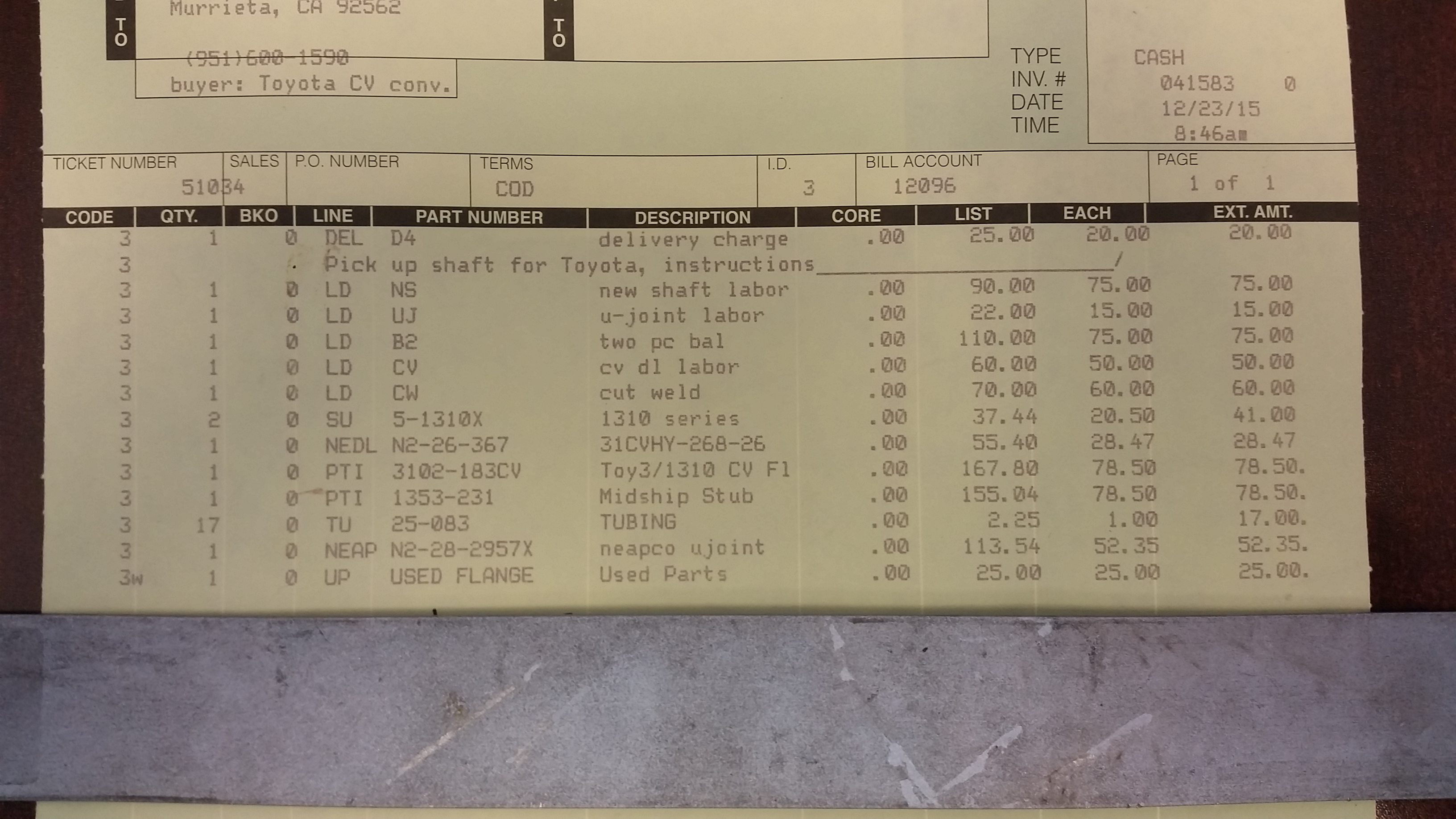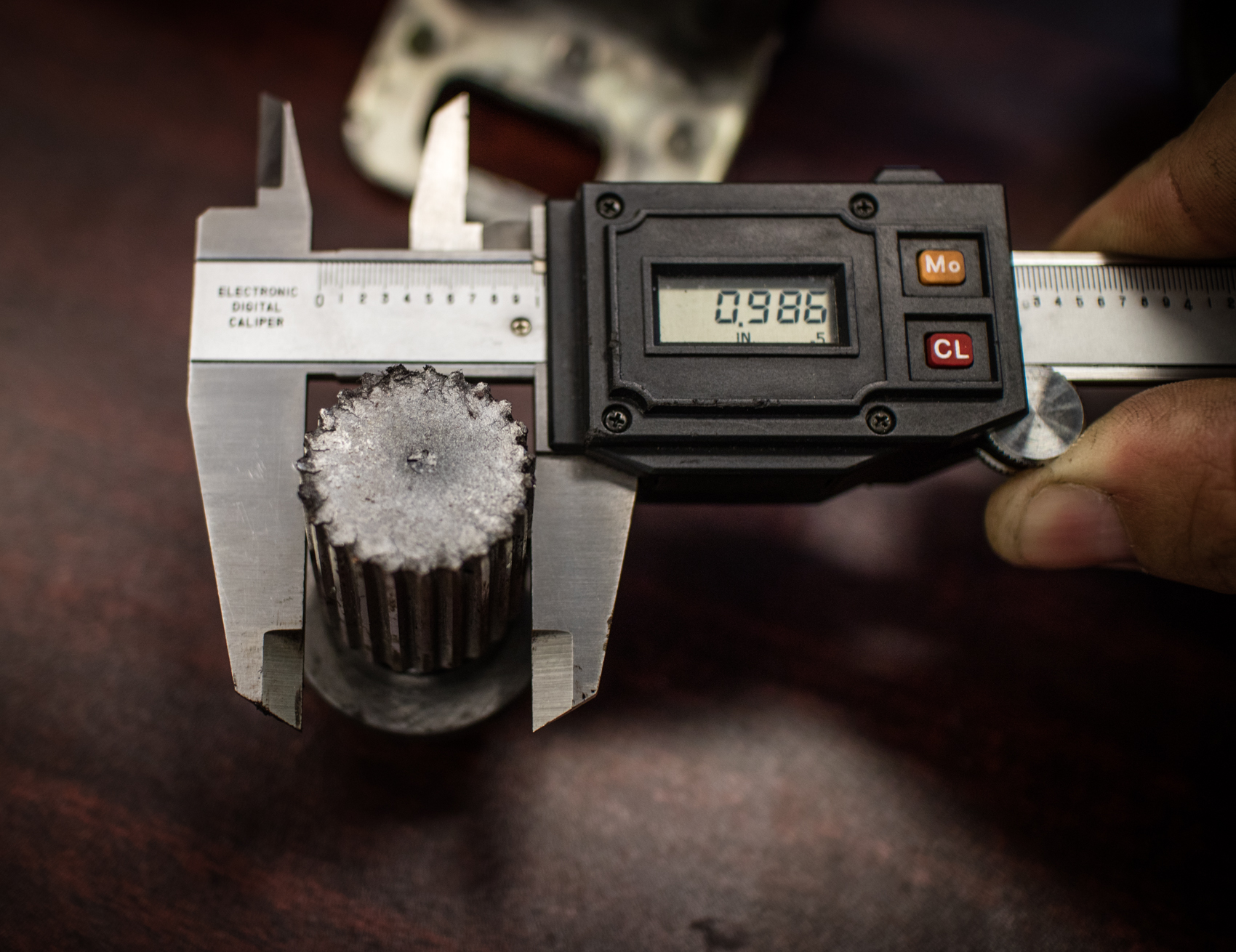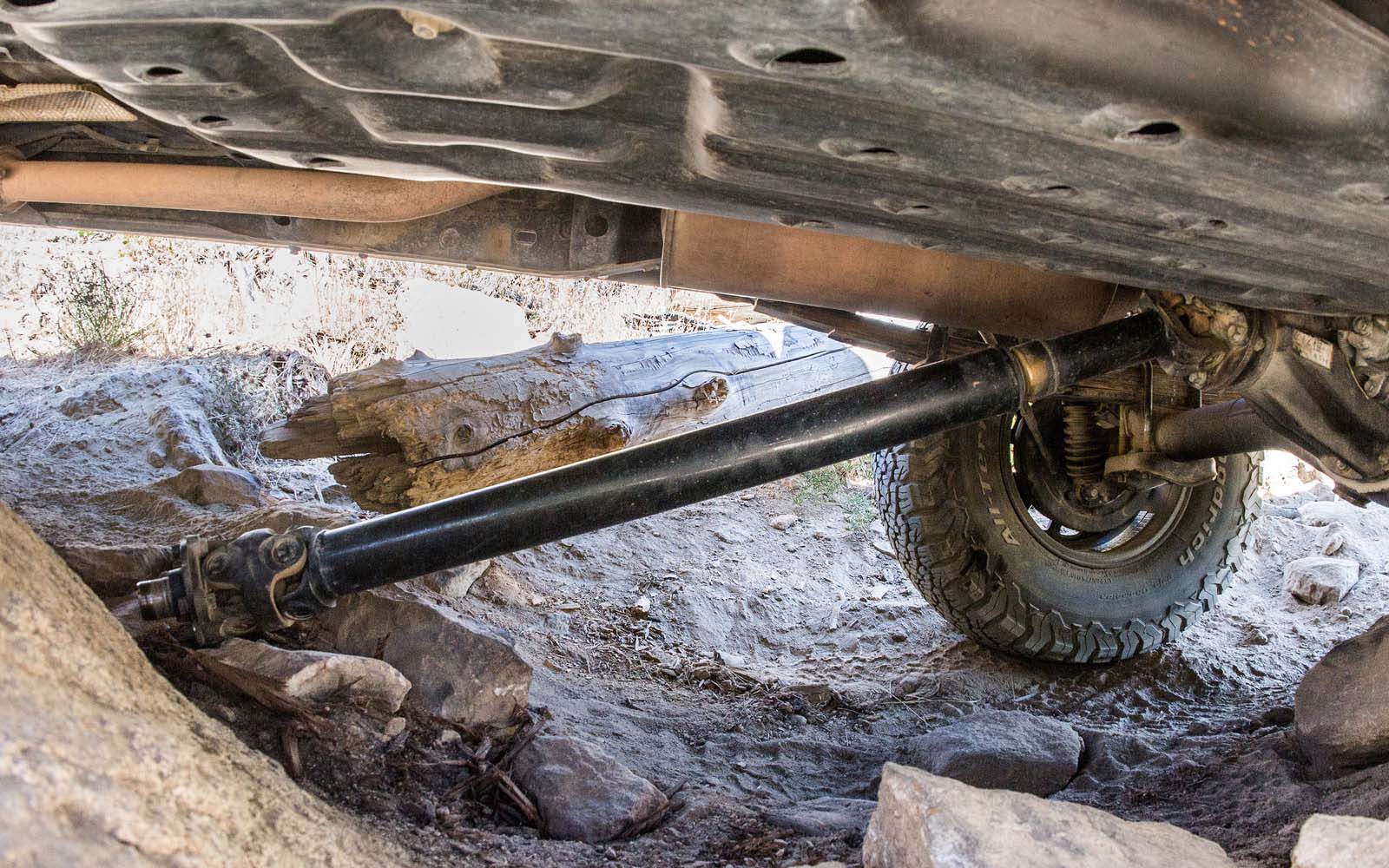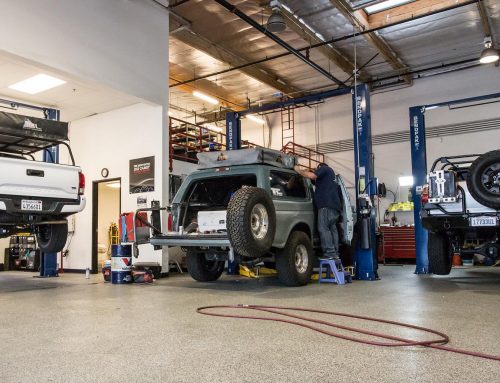2005 Toyota Tacoma TRD Off-Road
V6 4WD
All stock running gear
Mid-travel suspension resulting in approx 3″ lift
285/75R16 tires
2005+ Toyota Tacoma’s are known to develop a take off and highway vibration when the rear has been lifted due to a 3 u-joint driveshaft and limited options for achieving proper u-joint angles due to transfer case and carrier bearing mounting. Multiple people have attempted to fix with shimming the rear axle and dropping the carrier bearing with limited reports of success. The known cure has been to modify the rear driveshaft to incorporate a double-cardan joint. This is what I have done after years of dicking around with spacers and shims.
Entire 2 piece driveshaft was dropped off to be modified with a double-cardan joint on 12/23/2015. Having good experiences with the company prior I installed it without hesitation. It appeared that the entire driveshaft was new with exception of the flanges that mount to the transfer case and rear differential.
Parts receipt. A bit of internet research reveals using components from Northern Drivetrain and Neapco.

Truck get’s used off-road, but nothing beyond what the truck should be capable of from Toyota. No rock bashing, no flying through whoops, no wheel hopping, no King of the Hammers. You can get a general idea of what the truck goes through if you check out the trip reports. Stock rear driveshaft went 135,000 miles and 10 years with no problems of any sort. “Modified” driveshaft lasted 6,000 miles and less then 1 year. Only reason for stock replacement was to finally address the vibration issues.
This is where the driveshaft failure occurred. 8,800ft on a one way dirt trail through the Sierra Mountains. Motoring along without any difficulty when suddenly I heard a loud BANG and felt the the entire truck shudder from the release of energy. Never hit any rocks, there are no dings and no signs of making contact with any sort of object.



Thankfully we were able to get off the mountain and drive the truck home 380 miles in 4wd.
Called the driveline shop first thing on Monday morning and explained the situation and understandably they needed to inspect it for themselves before coming to any conclusions. Before they came to pick it up I pulled the stock Toyota front portion of the driveshaft out of the garage to do some comparisons.
My comparison between the Stock and Modified.
Stock: 26 splines.
Modified: 23 splines.
About a 13% difference in diameter.
The sheered 23 spline midship stub from the modified driveshaft.

Stock Toyota 26 spline midship stub.

The sheered off midship stub in the stock Toyota yoke for size comparison.

Left: Stock Toyota front driveshaft and yoke. 26 spline. Center: Modified front driveshaft with sheered 23 spline midship stub. Right: Modified rear driveshaft.

After they inspected it they gave me a call letting me know they’ve never seen that before. Questioned vehicle setup and how it was driven. Was truthful about it all as I want to ensure that this never happens again.
I suggested I’d pay the difference to upgrade to heavier duty 26 spline components but they responded that what they used was the largest available before having to do full custom carrier bearing and cross member. Would also need the truck there to do the install.
The shop decided that because it was an aftermarket stub it may have been defective. To rectify the issue they said they were going to modify a factory Toyota front driveshaft to work with the setup that’s on there – their thinking that because it’s factory Toyota, it’s forged, heat treated and stronger then the parts they have access to.
They repaired the driveshaft and delivered it at no charge.

Curiosity getting the best of me, decided to inspect what was used this time around. Ended up being the same 23 spline stub, although this one does look a bit different and more factory then the last.

I’ve reinstalled the supplied driveshaft and once again the truck is driving nice and smooth. But I have lost all confidence and have no intention of going anywhere far on trips until I get some more information and another opinion. Knowing that components are smaller then what the truck came with from the factory puts a bad stigma on it.
My questions and concerns:
- Is this a common or rare failure?
- My thoughts are to find a flange for the stock Toyota front driveshaft I have, then mounting the rear driveshaft to that. Is this possible or make sense?
- If that’s not a option, is there a 26 splined midship stub and flange that works with the Toyota carrier bearings?
- According to the receipt and pictures, does the 1310 u-joints and CV (double cardan joint) seem sufficient enough or comparable to stock components?
- What would the price be to make a brand new 2 piece driveshaft with heavier duty components?
My currently work load and setting makes it very hard to be on the phone during business hours, and taking the truck in for inspection will require a day off – hence the reason I’m laying out as much information as possible. I’m willing and ready to do what’s needed even if it requires starting over with a new driveshaft to ensure this will not happen again.
I greatly appreciate your time and input.
Additional information and pictures of how the truck is currently setup.
- At ride height flange to differential and flange to transfer case u-joint operating angles are 1*~.
- No binding at any stage of travel.

At ride height.


At full droop.

Too be continued….



Very interesting. can’t wait to see the final product
You non-Regular Cab owners and your two-piece driveshafts. I drive a 2008 Regular Cab Tundra (6.5″ bed) so Toyota decided to give us a one-piece driveshaft with a 1350 series u-joint. For the Taco a 1330 series u-joint is used from the factory so I wouldn’t go smaller than that. (http://media.spicerparts.com/cfs/files/media/Fixu48wuSEM7rBo2M/k350-1-dssp-sup.pdf?token=eyJhdXRoVG9rZW4iOiIifQ%3D%3D&store=original) There’s a lot more shock loading off-road, even if you don’t abuse the truck. There’s probably not too much difference in driveshaft length between my truck and your DCSB so perhaps you could order a one piece shaft as well? If you have some spare time you could take a look at Dana’s media website as there’s quite a wealth of information there (http://media.spicerparts.com/media). Here another good document for your particular quandary:
Spicer Driveshaft Components Failure Analysis Guide: http://media.spicerparts.com/cfs/files/media/3ttd8siGyyXNdsRbW/3272-42016.pdf?token=eyJhdXRoVG9rZW4iOiIifQ%3D%3D&store=original
They also have a number of convenient calculators that you can use as well: http://spicerparts.com/parts/driveshaft/automotive/driveshaft-assemblies
I hope that my comment doesn’t get deleted by a spam filter and that you find a good solution.
-Dirk
I’ve heard of guys chopping up Tundra drive shafts to create double cardan shafts for fzj80’s.. perhaps run a search on ih8mud for more information. I had a double cardan rear made for my 80 from a well-respected drive line shop in San Jose and they used some sort of new generation 1310 u-joint that’s considerably stronger than past models. Spicer joints are also much easier to change on the trail than Toyota joints, so maybe keep that in mind as a non-oem alternative. Best of luck.